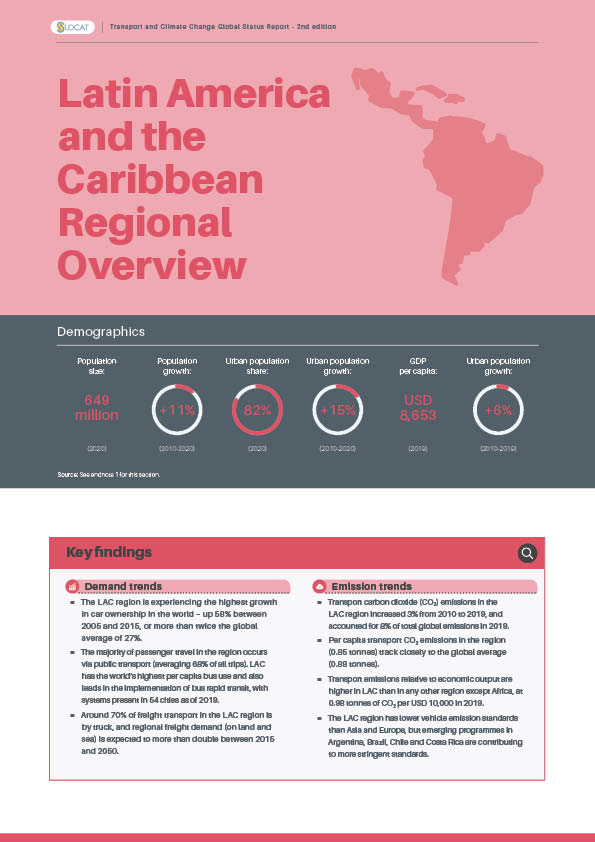Latin America and the Caribbean Regional Overview
Population size
(2020)
Population growth
(2010-2020)
%
GDP growth
(2010-2019)
%
Total vehicle sales
growth (2010-2019)
%
Total transport CO2
emissions (2019)
Share of global transport
CO2 emissions (2019)
%
Latin America and the Caribbean is the second most urbanised region in the world after Asia, with 81% of the population living in urban areas in 2019.This high urbanisation rate has led to rising demand for transport and, in many cases, to an increase in private vehicle trips, resulting in congestion, bad air quality and growing CO2 emissions.
The region has a high share of urban bus use as well as broad roll-out of bus rapid transit systems. In many cities, efforts are being made to improve walking and cycling infrastructure. However, the region also has the highest global growth in private vehicles, with projections of a three-fold increase by 2050, to exceed 200 million. Freight represents 40% of global transport CO2 emissions, and in the LAC region, 70% of surface freight is delivered via road (trucks), contributing greatly to regional transport emissions.
COVID-19 has profoundly impacted transport in the LAC region, with sharp decreases in trips to public transport stations, freight transport and aviation activity. Demand levels stayed roughly the same through late 2020, although they showed slight increases each month. In addition, several major cities had announced plans to expand bicycle lanes before the onset of COVID-19, and the pandemic may have accelerated implementation.
Key Findings
-
Demand Trends
The LAC region is experiencing the highest growth in car ownership in the world – up 58% between 2005 and 2015, or more than twice the global average of 27%.
Figure 1.
Car ownership rates per 1,000 people in Latin America and the Caribbean, 2015
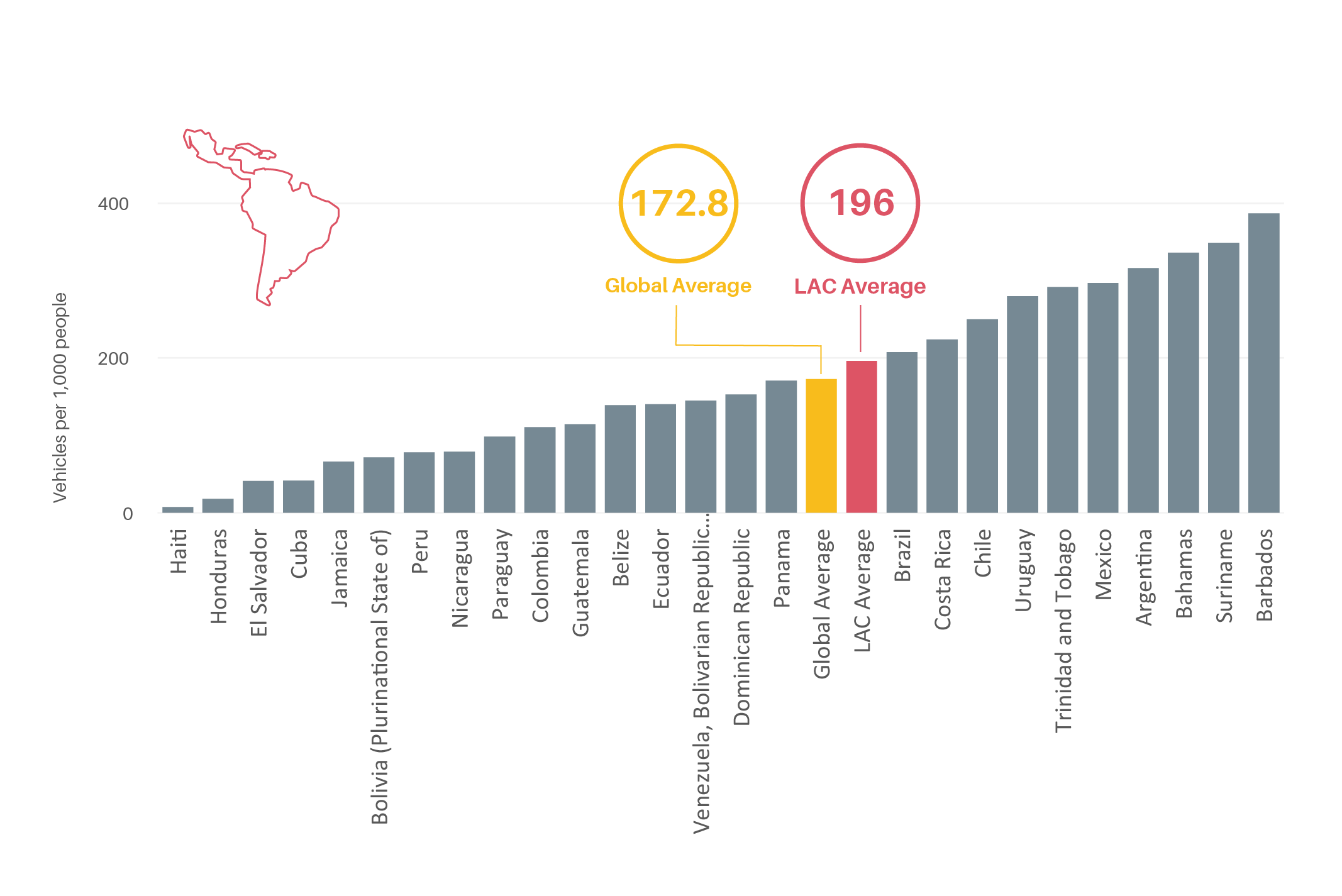
Figure 2.
Growth in car ownership in Latin America and the Caribbean, 2005-2015
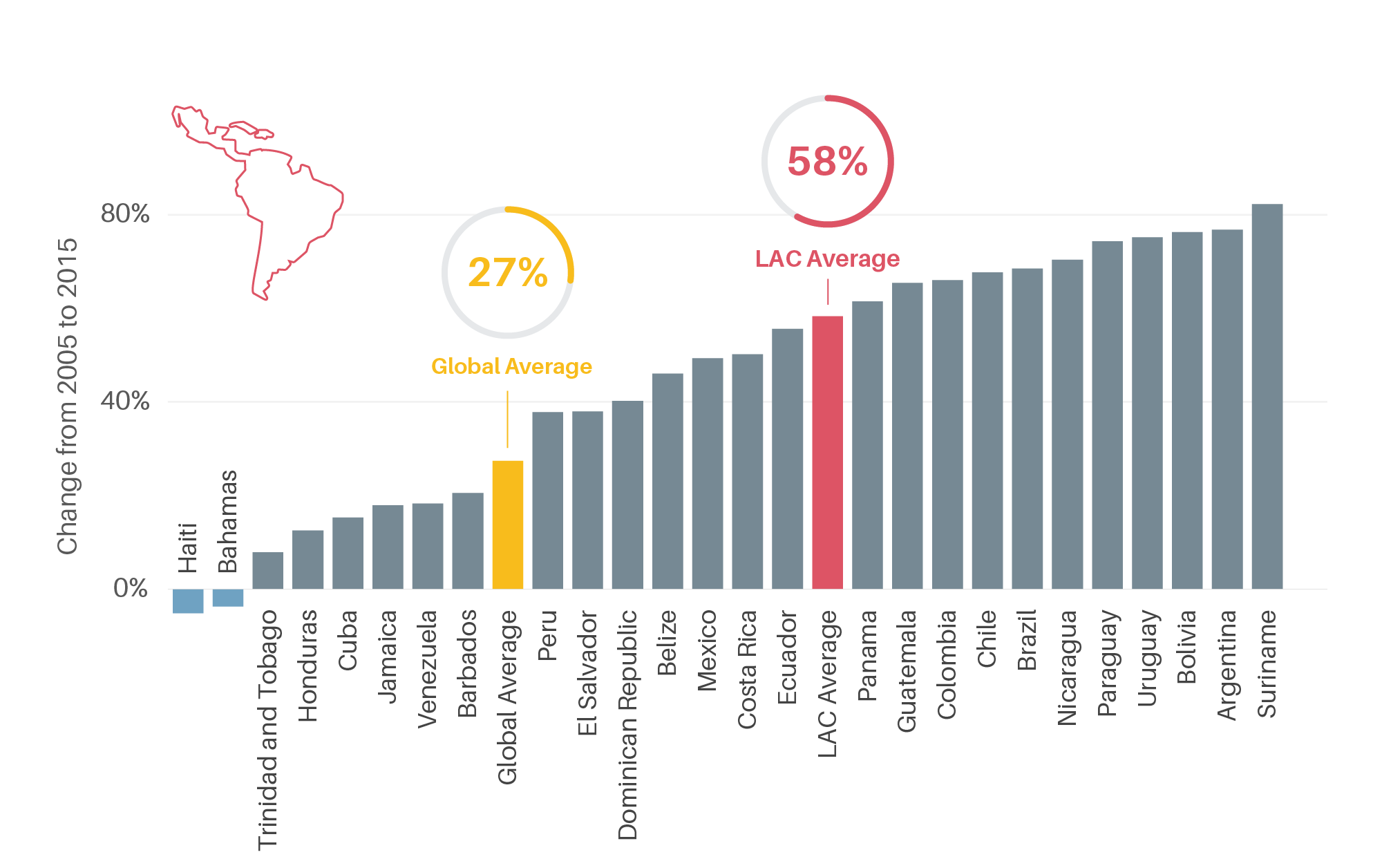
The majority of passenger travel in the region occurs via public transport (averaging 68% of all trips). LAC has the world’s highest per capita bus use and also leads in the implementation of bus rapid transit, with systems present in 54 cities as of 2019.
Around 70% of freight transport in the LAC region is by truck, and regional freight demand (on land and sea) is expected to more than double between 2015 and 2050.
-
Emission Trends
Transport carbon dioxide (CO2) emissions in the LAC region increased 3% from 2010 to 2019, and accounted for 8% of total global emissions in 2019.
Per capita transport CO2 emissions in the region (0.85 tonnes) track closely to the global average (0.88 tonnes).
Figure 4.
Per capita transport CO2 emissions in Latin America and the Caribbean, 2019
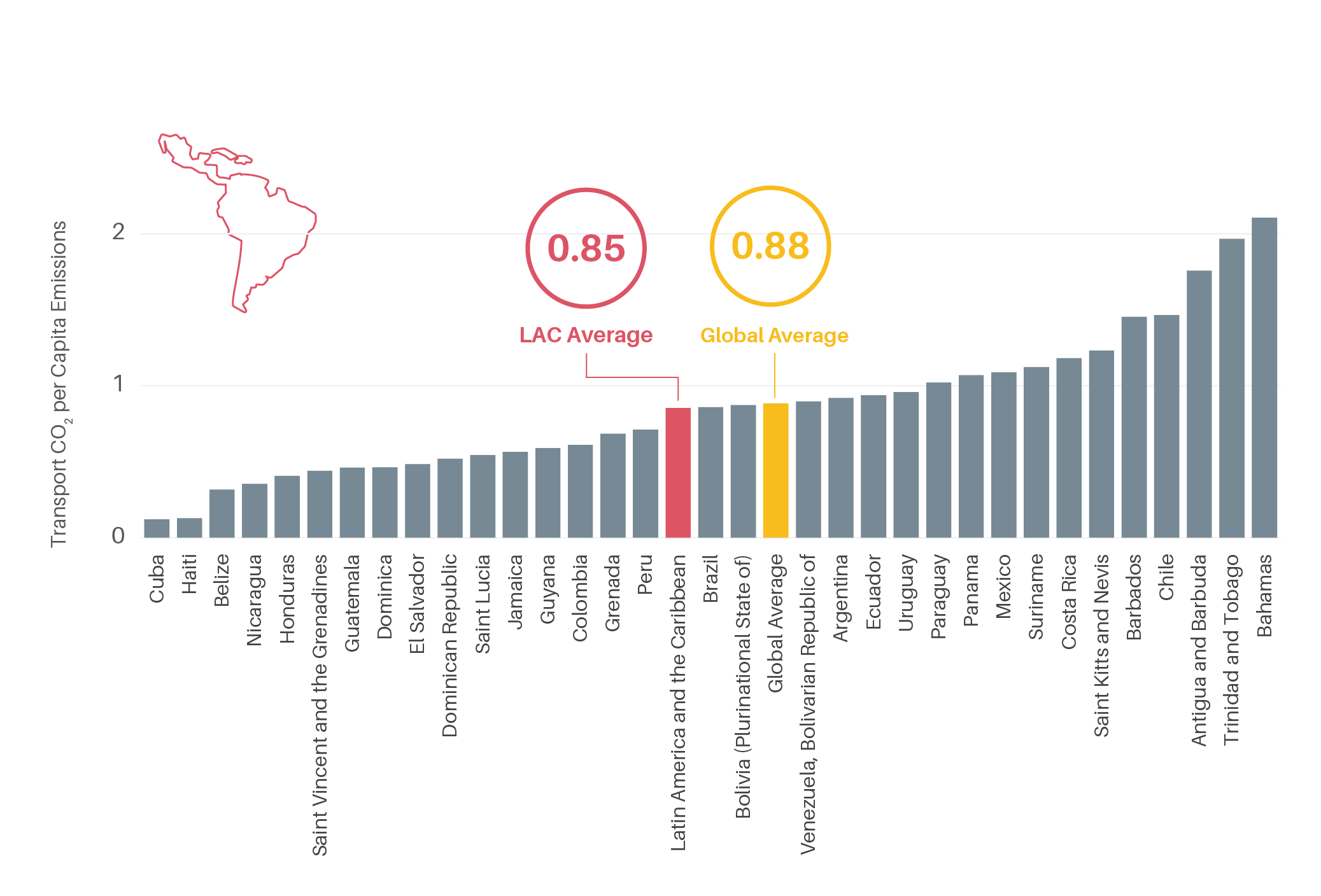
Figure 5.
Change in transport CO2 emissions in Latin America and the Caribbean, 2010-2019
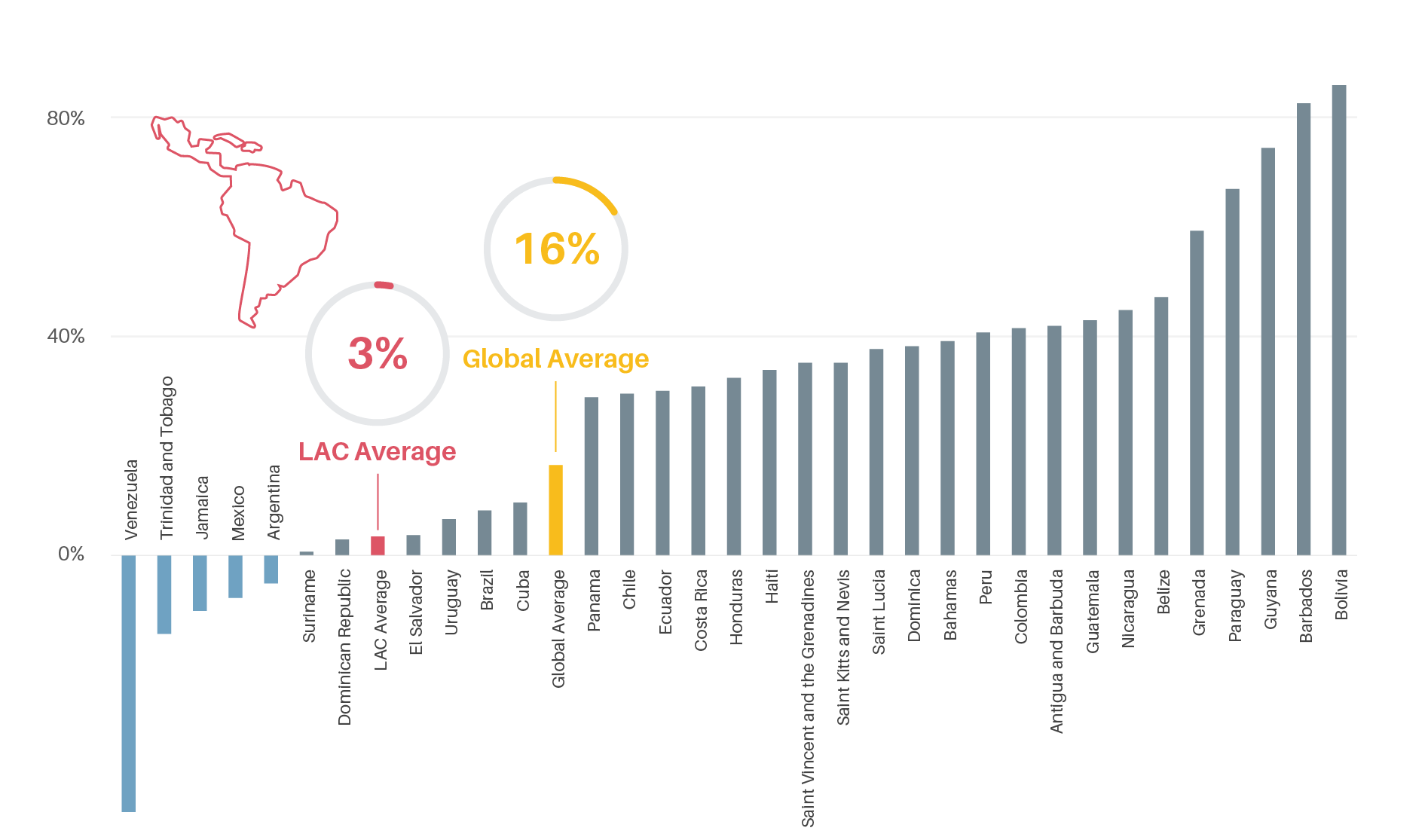
Transport emissions relative to economic output are higher in LAC than in any other region except Africa, at 0.98 tonnes of CO2 per USD 10,000 in 2019.
The LAC region has lower vehicle emission standards than Asia and Europe, but emerging programmes in Argentina, Brazil, Chile and Costa Rica are contributing to more stringent standards.
-
Policy Measures
Strategic plans, enabling policies and incentives are emerging across the region to help accelerate the uptake and manufacturing of electric vehicles.
The LAC region boasts the world’s highest shares of renewable energy, including in electricity grids, allowing greater potential to decarbonise transport through electrification.
The region has the world’s second highest number of implemented sustainable urban mobility plans (SUMPs) after Europe, and national urban mobility plans (NUMPs) are growing in prominence (although not yet widespread).
Cities in the region continued to invest in cycling infrastructure, supported by strategies and incentives to increase active mobility; however, investments in pedestrian infrastructure have been insufficient, considering that walking constitutes as much as 54% of all trips.
Shared mobility has become a prominent mode in the region, but further expansion is hindered by insufficient regulatory frameworks and a lack of integration with existing transport modes.
-
Impacts of the COVID-19 pandemic
Mobility reductions accelerated starting in mid-March 2020, and by the end of that month passenger travel demand in the region had dropped nearly 80% and stayed roughly the same through late 2020.
Public transport systems in the region are financed through a mix of user fees and government subsidies, both of which have been greatly impacted by the pandemic, with decreases in ridership and economic downturns.
Cities across the LAC region responded by adding temporary bicycle lanes to promote socially distant transport options, including in Bogotá, Buenos Aires, Cuenca (Ecuador), Lima and Mexico City, among others.
Paratransit (sometimes called “informal transport”) has been an essential supplier of transport services in the LAC region, especially during the COVID-19 pandemic, providing access to mobility for millions of people, filling in gaps left by formal transport systems by quickly adapting and responding to changes in demand, and generating significant employment opportunities.

